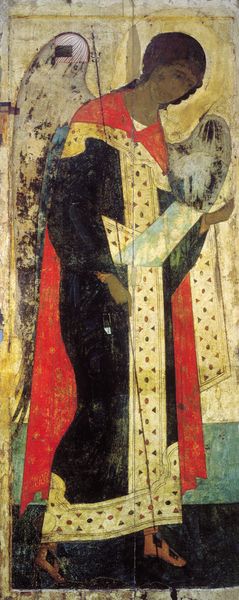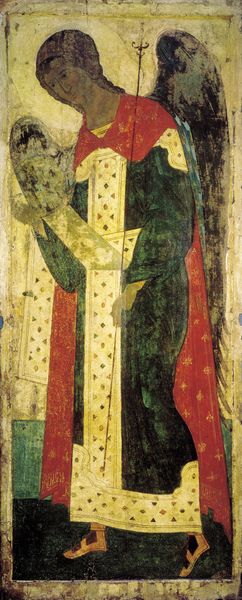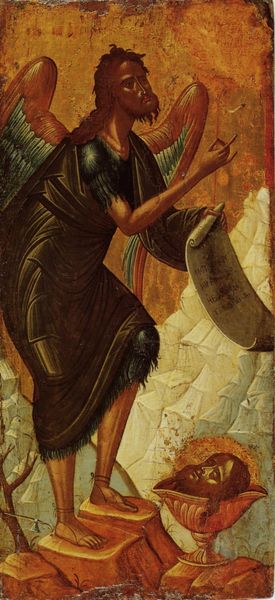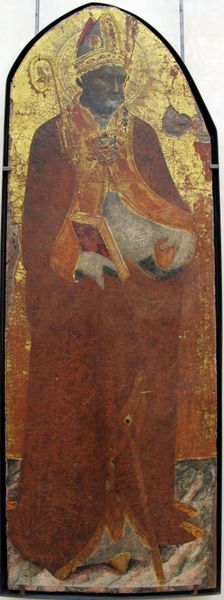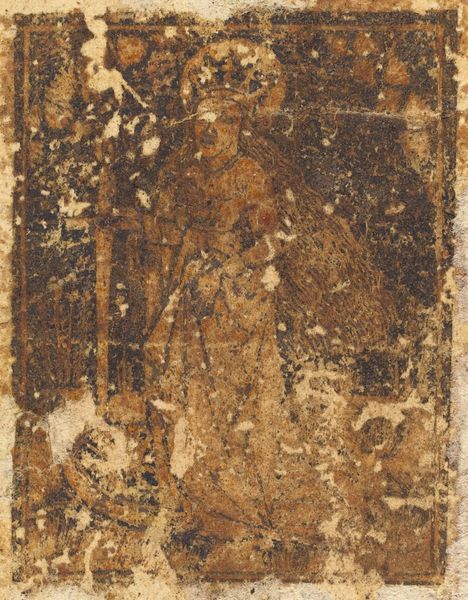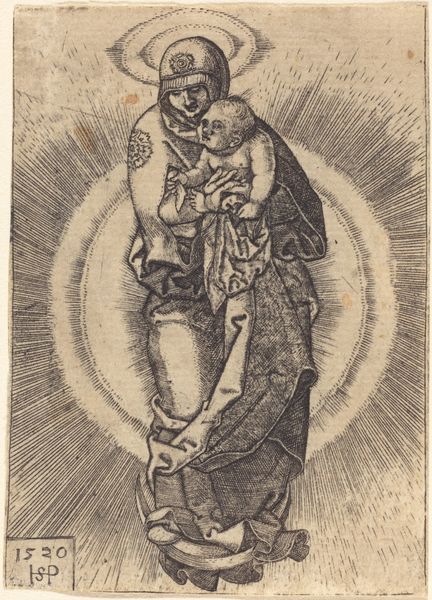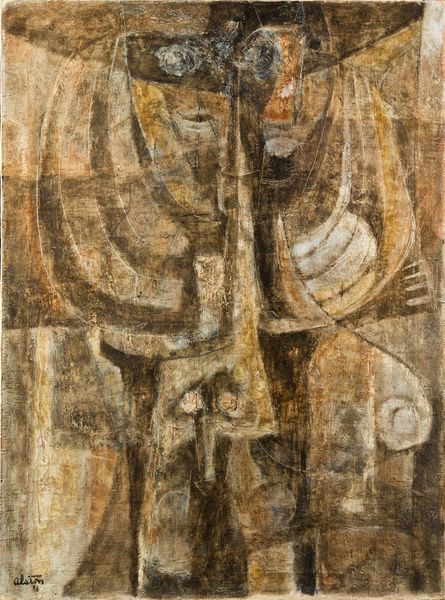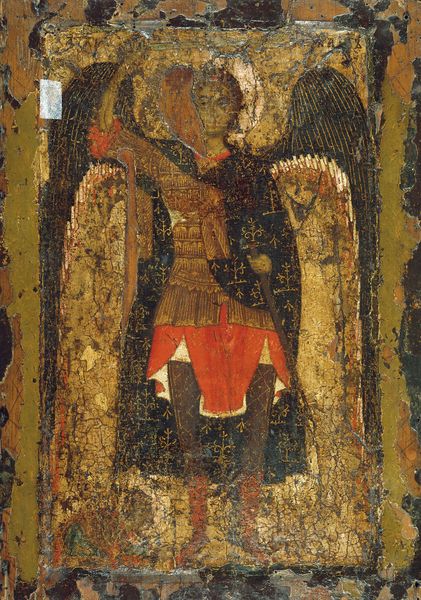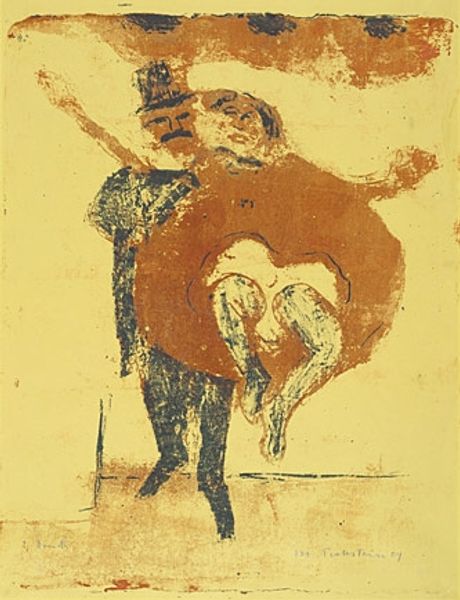
tempera
#
portrait
#
byzantine-art
#
medieval
#
tempera
#
figuration
#
history-painting
#
christ
Dimensions: 313 x 105 cm
Copyright: Public domain
Curator: Standing before us is Andrei Rublev's "Saint Andrew," a tempera painting from 1408, originally located in the Assumption Cathedral in Vladimir, Russia. It's a striking example of Byzantine art from the medieval period. Editor: The first thing that hits me is this incredible sense of quiet melancholy. His posture is almost apologetic, his gaze completely averted. There is something raw, almost unfinished, that intensifies its haunting effect. Curator: The use of tempera on panel tells a story in itself. The pigments would have been painstakingly ground and mixed, the gold leaf carefully applied – the labor a testament to the devotion poured into religious icons during this era. I see that, while worn down, this image's function was clear at one point. Saint Andrew is not some distant ethereal concept but instead the embodiment of contemplation. Editor: Absolutely, the materiality is integral. It’s like the passage of time is physically etched into the image; areas of flaked paint speak of history. The gold peeking through feels not grand but like the fading embers of an idea, a hope. The folds of his robe aren't just about form, it evokes the very notion of burden. Curator: The Byzantine style favored flattened forms and symbolic representation. The elongated figure and delicate rendering are both features intended to distance the viewer from earthly concerns, redirecting focus towards the spiritual realm, though of course, materiality itself tethers us to that earth. It's a dialogue between both worlds, right? Editor: Yes, but look at his hands! They feel incredibly human amidst the symbolism. And that slight inward tilt of the head. There's so much captured emotion and fragility embedded. I wonder what he's reading on that scroll? Perhaps the weight of knowledge, a prophecy that burdens him... It sparks such speculation, makes me think about all of our perceived failures and doubts. Curator: I think considering "Saint Andrew" within the broader context of early 15th-century Russia sheds more light on it too. It was a period of political turmoil, constant warfare, famine, and then there was a constant existential question within the state. So "Saint Andrew" as a whole serves as a symbol of faith and an escape, even if it looks as forlorn as that moment. Editor: It’s this tension, this inherent paradox, that makes it so unforgettable. The icon feels ancient, a survivor; yet it simultaneously embodies this profound vulnerability and introspection. A symbol that both lasts through and is made by change. It's far more emotional and dynamic than one might give it credit for upon first view.
Comments
No comments
Be the first to comment and join the conversation on the ultimate creative platform.
